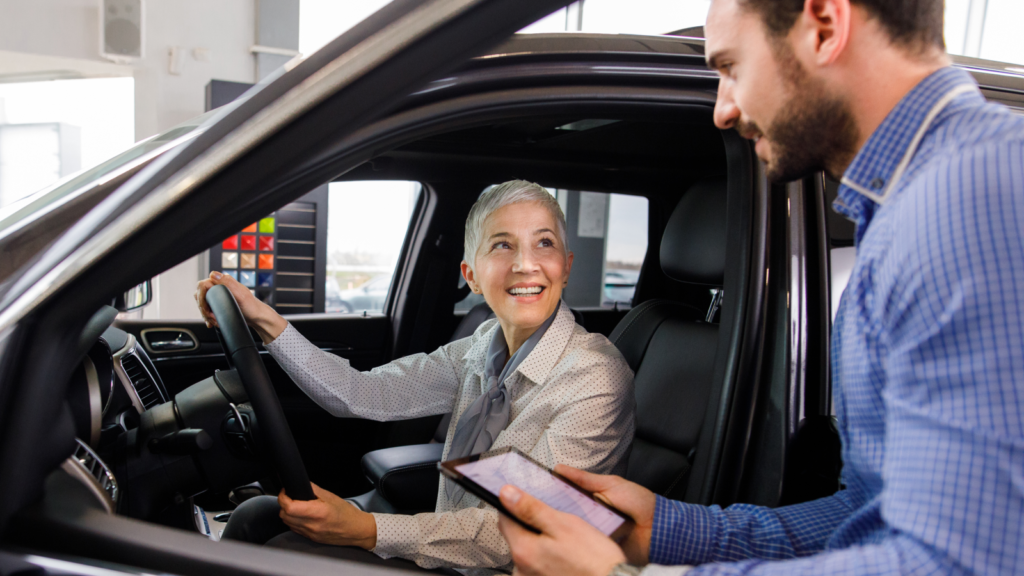The Road to Excellence: Taking Customer Experience in Powersports into Overdrive
June 9, 2022
Customer Experience
Powersports and recreational industry expert Jodi Searl, Vice President of Industry Solutions and a Medallia Solutions Principal, shares what the road to excellence looks like for customer experience in powersports as the industry continues to grow rapidly among first-time buyers and enthusiasts.
First-time buyers and enthusiasts are generating considerable growth in the powersports and recreational industry. With this large influx of buyers, an opportunity exists for experience management to take the customer journey to a new level.
Leaders in this space are already taking action to identify opportunities — even in the face of global challenges, such as supply chain constraints and a labor shortage, top brands are listening to and engaging with customers exactly where they are and responding in real time.
Powersports and recreational expert Jodi Searl discusses the growth the industry has experienced recently, the challenges experience management is tackling in this space, and what the future might look like for leaders to stay ahead and for laggards to catch up.
Can you briefly share information about your background and your history in the powersports and recreational industry?
As a lifelong motorcyclist and overall outdoor enthusiast, customer experience in this industry is more than my professional endeavor. Prior to joining Medallia, I oversaw the global dealer training program at Harley-Davidson. Part of that was the stand-up and operationalization of a global customer experience platform, which was essentially measuring the top-to-bottom retail transformation the company had undertaken starting in 2013 and ensuring that dealership teams around the globe had the knowledge and skills, and were able to demonstrate the behaviors necessary to deliver exceptional customer experiences.
We were moving from a wholesale transactional model to a retail experiential model, and later partnered with Medallia to help us leverage our data in an actionable way to create a number of success stories together around the value of investing in customer experience. I ended up joining Medallia and now help companies tackle the opportunities in front of them in this industry, as well as outside of it.
Where does experience management come into play for powersports?
Experience management is playing a more important role as the industry has shifted in light of the global pandemic. Early COVID-19 restrictions heavily limited travel, and people found themselves looking for recreational opportunities to engage in either independently or with friends and family that could be done closer to home. In fairly short order, people started using their discretionary income resources to invest in the industry at an unprecedented rate.
Market research indicates that first-time buyers in these ‘grown-up toy’ segments have a 40% abandonment rate in the first three years of purchase — making experience management crucial. One of the ways to mitigate this is by understanding what these first-time buyers are looking for to keep them engaged in a community or lifestyle associated with the purchase. For a first-time motorcycle buyer, that might look like helping them find a riding group; for an off-road vehicle purchaser, it might be guided touring activities.
Medallia is defining the vision and strategy in this space. We know that overall purchase and ownership experience can make or break how a customer feels about a decision to stay engaged. We are partners of the original equipment manufacturers (OEMs) and dealer groups so that together we can transform the customer experience in powersports and help reduce that abandonment rate. We’re in the powersports, RV, auto, marine, heavy equipment, and even riding mower spaces to ensure that OEMs and dealers have the data and insights needed to deliver on the experience customers want.
What are the biggest challenges faced by organizations in powersports right now?
One significant challenge is the multitude of customer journey touchpoints with different channel owners as a result of OEM and dealership partnerships. While many consumers assume that the relationship is seamless, people in the industry know that isn’t usually the case.
Dealerships can run the gamut, from being company-owned or big conglomerate groups to mom-and-pop shops, all with different ways of running their businesses. As a result, delivering seamless, consistent customer experiences at every touchpoint can be challenging. Our teams work to position Medallia to help control that experience along the way and create awareness of where breakdowns happen while providing actionable insights on how to fix them.
We help OEMs gather the data and insights to influence the end-user experience delivered by non-OEM employees to deliver on the brand promise. Given that first-time buyer abandonment rates are so high, it’s important to pay attention to their experience, and it’s vital to make sure that you’re delivering on your brand promise at every customer journey touchpoint.
Making sure that these customers are engaged and love their products means influencing not only purchasing experiences, but also ownership experiences. Gathering customer feedback, generating insights, and turning those into action allows us to partner with OEMs and dealer groups to not only keep their current customers in sport and activity, but also to work with new customers and decrease that abandonment rate by ensuring that processes and practices are designed and delivered to optimize customer experience.
With those challenges, what opportunities exist for organizations to tackle? Have you noticed that leading organizations are investing in technologies to take advantage of these opportunities?
Best-in-class practices that we’re seeing are from companies that truly democratize data and have set up the right governance rules around who needs to see what information and ensure it gets delivered in real time. Whether it is contact center or social data that serves as early warning indicators for potential quality issues, or whether it’s dealership staff who utilize training programs that teach them how they should be delivering on the brand promise, every part of an organization owns the customer experience in powersports. The customer and their experience along their journey will help make or break your company, and everyone shares that fate.
Where we see companies struggling with their programs is when customer experience data is siloed and not optimized. The company may have a ton of data that could really help all teams for their impact on customer experience, but the organization lacks the structure to ingest that data and then use it to make informed decisions on priorities and strategies. This is where Medallia can help.
In the 2022 prediction survey, you talked about manufacturers and dealers rethinking brick-and-mortar experiences and a shift to location-based delivery. You also mentioned humanizing experiences even as virtual takes a more permanent place — how do you see brands being part of experiences virtually going forward?
We’ve seen the need for brands to re/upskill and really step up their game. Something that is unique to the industry is that people often will want to do a test drive or a demo. We’re seeing people do this in non-traditional ways, such as renting a car in order to test drive and experience multiple models for longer periods of time. Our overall industry data indicates that consumers are conducting more research than ever online and spending less time in actual physical locations. It’s important that manufacturers and dealers leverage different technologies and channels to engage with customers where they are most comfortable.
Here’s an example: last year, I bought a car entirely via email and text; the only time I ever interacted with someone in real time was when they were delivering the vehicle. Everything up until the delivery had been easy and seamless. I was able to engage with the brand and dealer on the channels I preferred, but the delivery driver couldn’t walk me through any of the features of the car. A year later, I am still trying to figure out some of my car’s functionality because there was such a miss at that final touchpoint, and it has had a significant impact on my ownership experience.
Every touchpoint of that customer journey has to be re/upskilled so that the people responsible for it, which has likely shifted, can do their jobs effectively in a way that delivers on brand standards and customer experience expectations.
When you last did a Q&A like this in March 2021, you stated disruption is ongoing — it’s accelerating and business conditions will continue to change. What do you think separates the leaders from the laggards?
Leaders are listening and they’re acting — it really is those two things. They’ve got their ears wide open to every signal, they’re ingesting that data, and then they are acting as a result of it.
A Mitto study recently discussed how supply chain and chip conductor issues have significantly impacted the space, but customer expectations can be managed. As long as you control what is within your control, like communication processes, and you’re being proactive in your communication, customers are willing to forgive a lot — as long as they don’t feel like they’re in the dark.
Transparency is so important to customers, and is critical to building the trust necessary to build loyalty, so making sure that your employees are empowered to share what’s going on and then ensuring that they’re actually sharing it with your customers is more important than ever.
What could other industries learn from the way in which your industry’s leaders approach experience management? How has this industry learned from other industries leaders’ approaches to experience management?
I’ve had the opportunity to oversee a number of different verticals in this role, and the real power of this team is their cross-functional approach that allows us to understand how Medallia can meet our customers’ business needs by leveraging our learnings.
For instance, product shortages, labor issues, and logistics disruptions are impacting all industries. Other industries such as retail and grocery and hospitality all have had to adjust their strategies and actions in significant ways. It’s important to understand how best-in-class companies respond to these problems and the robust communication processes both internally and externally they use to do so.
Just the way that retail brands adapted to Covid-19 restrictions with digital ordering and in-store pickup models is a great example, and a larger example of one of the forcing functions that came out of it. Its use became ubiquitous in response to the global pandemic, and is here to stay as a result of customer feedback on convenience and safety. Now, we are seeing heavy ups in digital like this moving from the retail industry to restaurants, hospitality, and manufacturing. From industry to industry, everyone is learning from those who’ve adapted successfully.
Interested in discovering all the differences between leaders and laggards? Download our report, Uncovering the Secrets Behind a Successful Customer Experience Program.






